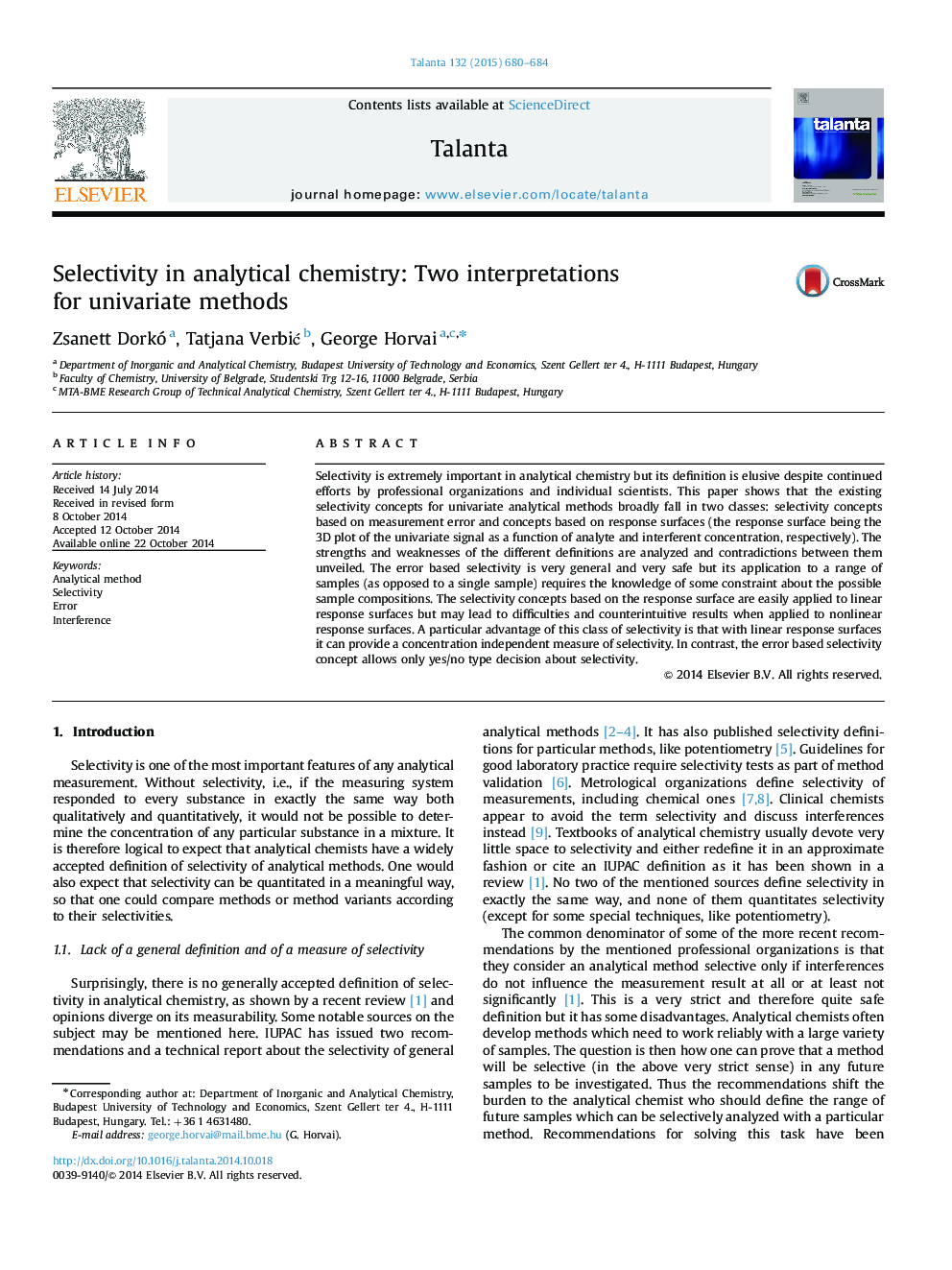| کد مقاله | کد نشریه | سال انتشار | مقاله انگلیسی | نسخه تمام متن |
|---|---|---|---|---|
| 1242073 | 1495803 | 2015 | 5 صفحه PDF | دانلود رایگان |
• Selectivity definitions are based on measurement error or on the response surface.
• We give for the first time a comparative analysis of these two selectivity concepts.
• Error based selectivity is a yes/no decision and assumes compositional constraints.
• A selectivity measure can only be based on (pseudo)linear response surfaces.
• Judgments on selectivity based on the two definitions may be contradicting.
Selectivity is extremely important in analytical chemistry but its definition is elusive despite continued efforts by professional organizations and individual scientists. This paper shows that the existing selectivity concepts for univariate analytical methods broadly fall in two classes: selectivity concepts based on measurement error and concepts based on response surfaces (the response surface being the 3D plot of the univariate signal as a function of analyte and interferent concentration, respectively). The strengths and weaknesses of the different definitions are analyzed and contradictions between them unveiled. The error based selectivity is very general and very safe but its application to a range of samples (as opposed to a single sample) requires the knowledge of some constraint about the possible sample compositions. The selectivity concepts based on the response surface are easily applied to linear response surfaces but may lead to difficulties and counterintuitive results when applied to nonlinear response surfaces. A particular advantage of this class of selectivity is that with linear response surfaces it can provide a concentration independent measure of selectivity. In contrast, the error based selectivity concept allows only yes/no type decision about selectivity.
Figure optionsDownload as PowerPoint slide
Journal: Talanta - Volume 132, 15 January 2015, Pages 680–684
